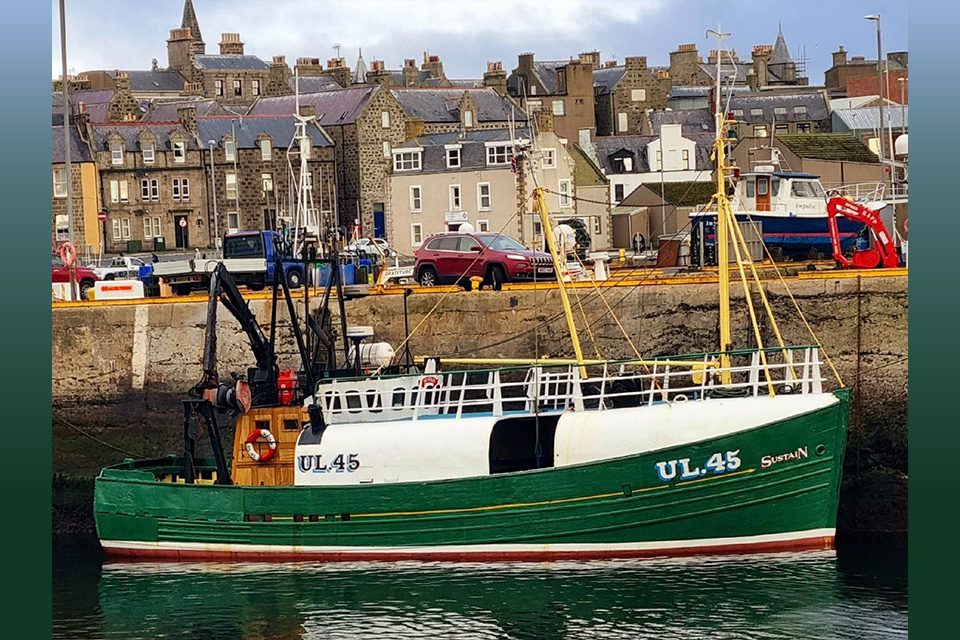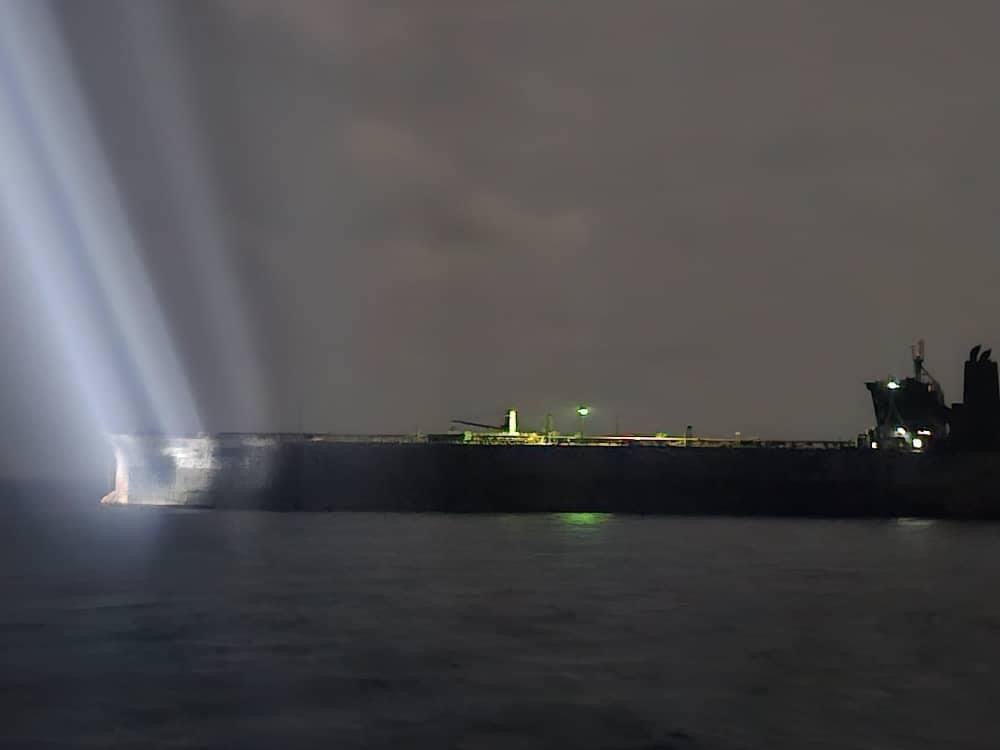By Captain John Konrad – gCaptain has remained mostly silent on the so-called “bomb ship” Ruby, a vessel that has sparked widespread fear and speculation about its potentially explosive cargo threatening a NATO base in Norway. On X (formerly Twitter), rumors have swirled that this ship, manned mostly by Syrian crew, is a “ticking time bomb” sent by Russia to target NATO. While this story has fueled a media frenzy of clickbait generating tens of thousands of pageviews for our maritime news competitors and big outlets like Newsweek, gCaptain hasn’t published this story for one reason: it’s riddled with misinformation and fear.
“The fact is Hazardous Material is regularly hauled on ships and 20,000 tons of ammonium nitrate is nowhere near the most dangerous cargo afloat right now,” said maritime historian Sal Mercogliano.
Sal is correct and, while the ship is experiencing many problems, it is closely monitored by numerous governments and non-government organizations. Several news organizations have reported the cargo on board is more than seven times the amount involved in the devastating 2020 Beirut explosion, which killed at least 200 people. This is true but the differences are stark.
The Beirut explosion wasn’t due to the cargo’s inherent danger alone. Instead, it occurred because the material was offloaded and forgotten. For six years, this cargo sat in a warehouse without proper safety measures after Lebanese authorities had confiscated it from the abandoned ship MV Rhosus. Yes, it exploded with catastrophic results but only after six full years of neglect.
Could the Ruby explode with catastrophic results? Yes, but this risk is well understood by the ship’s professional crew, classification society, flag states, insurers, and consultants who are closely monitoring the vessel’s progress.
The real story here isn’t about a bomb sent by Russia. It’s about a ship owned by a small company that sustained storm damage. The true concern is that shipyards are unwilling to risk repairs with hazardous cargo, leaving the seafarers aboard in a precarious situation.
So what happened?
The Malta-registered cargo ship Ruby, carrying up to 20,000 tons of ammonium nitrate, has anchored off the coast of Kent, England, after several European ports turned it away. The vessel, managed by UAE-based Serenity Ship Management – which allegedly operates just 10 ships – departed from Russia’s Kandalaksha port last month. Its reported destination was the Canary Islands, where it was to deliver fertilizer.
The Ruby sustained damage during an Arctic storm, resulting in a crack in its hull and damage to its propeller and rudder. These raised safety concerns, especially given the hazardous nature of ammonium nitrate that can explode when exposed to fire.
After initial attempts to dock in the Norwegian Arctic port of Tromsø the ship was directed to anchor away from the coast in early September. Norwegian authorities assessed the vessel and allowed it to proceed, deeming the damage minor enough for the crew to continue sailing, accompanied by a tugboat for safety. However, ports in Norway, Lithuania, Sweden, and Denmark imposed restrictions or denied entry due to the potential risks.
Rumors then circulated on X that she was heading for the Andøya Air and Space Station in Andøy, Norway. These rumors were picked up by Newsweek, stoking fears of Russian plans to bomb the NATO base.
“The Andøya Air Station in Andøy was built after discussions were held at a meeting of NATO member states in 1951. Earlier this year, 37.5 million kroner (about $3.5 million) was allocated for protecting the air base, which will soon become a base for long-range drones for sea surveillance,” wrote Newsweek along with a map showing the course Ruby would make if it sailed to Andøy. “Russian officials have regularly floated the possibility that their country could strike NATO members in response to providing aid to Ukraine.”
What Newsweek failed to explain was why the ship would sail to a NATO base or how it could make the journey from Tromsø without a pilot aboard.
Instead of sailing to Andøy the Ruby eventually set course for Malta, its flag state, but has since anchored approximately 14 to 17 nautical miles off the UK coast near Margate. This position has prompted media attention and public concern. His Majesty’s Coastguard has confirmed that the vessel is securely anchored outside UK territorial waters and is in regular contact with the ship’s crew. A spokesperson stated that the Ruby is “waiting for appropriate conditions to refuel at sea before passing through the English Channel” and clarified that the vessel is not restricted from proceeding on its voyage.
The Maltese authorities have indicated that they will not permit the Ruby to dock unless its hazardous cargo is offloaded first. Similar conditions were set by Lithuanian officials when the ship considered docking there for repairs. In light of these challenges, the ship’s managers are reportedly exploring options to transfer the ammonium nitrate to smaller vessels for storage, alleviating safety concerns and complying with port entry requirements.
The situation has reignited discussions about maritime safety and the transportation of hazardous materials, especially involving ships with links to Russia. Nordic countries and NATO have expressed anxiety over Russia’s use of civilian ships near critical infrastructure, such as oil and gas pipelines in the North, Baltic, and Norwegian Seas. Incidents like the unexplained sabotage of the Nord Stream gas pipelines in 2022 and the cutting of a gas pipeline and data cable between Finland and Estonia have heightened these concerns.
Diplomats and intelligence experts are closely monitoring the Ruby, viewing it as a potential test of European authorities’ responses to maritime risks posed by damaged vessels carrying dangerous cargoes. Some have suggested that a salvage team could help the crew dump the cargo at sea before entering a shipyard for repairs.
The most accurate news article so far is not Newsweek’s “Ship With 20K Tons of Explosive Cargo From Russia” or Tradewind News’ hyperbolic “Bulker carrying cargo with explosive power of Hiroshima bomb.” No, it’s an article published yesterday by Helen Brown at the Telegraph titled “There’s a Russian ‘floating bomb’ just off this Kent beach – but locals don’t seem to care.”
The outcome remains uncertain as international efforts continue to find a safe and compliant resolution for the ship and its cargo. With so many eyes on the vessel and precautions against allowing her to dock near large population centers or critical infrastructure, the biggest risk is not to NATO bases, but to the reputation of maritime journalism and the lives of the seafarers aboard.
Tags:

 Join The Club
Join The Club










